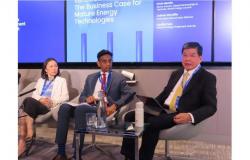Noon ? 2 p.m.? 5 p.m.? The sun does not heat the same way depending on the time of day.
If it is at its zenith in the middle of the afternoon, the ground releases more of its heat at the very beginning of the evening.
Follow the full coverage
Our advice for coping with heat episodes
“Put on your t-shirt between noon and 4 p.m. On beaches, in gardens or on hiking trails, parents and friends do not fail to provide this advice. In summer, temperatures rise and the sun is strong. The risks of sunstroke and sunburn increase. But watch out for several false friends.
By definition, noon refers to the time of day when the Sun is highest in the sky. First problem, the time zone chosen by France does not coincide with solar time. As a result, the sun’s peak point only arrives at 1 p.m. in winter and 2 p.m. in summer. There, the sun’s rays reach their peak and indeed hit the strongest.
Another pitfall, don’t forget to take into account the geographic coordinates of the city where you are. Brest and Strasbourg, for example, are on the same latitude of 48° north. But the two cities are almost 1000 kilometers apart and have very different longitudes (4° west for the first, 7° east for the second). Morally, solar time records a difference of almost 50 minutes between the two municipalities. The sun is strongest in Strasbourg around 1:30 p.m. and an hour later in Brest.
-
Read also
How to combat the heat on your terrace or balcony?
Peak energy around 6 p.m.
However, in the air, it is not at 2 p.m. that it is the hottest. Météo France explains that temperatures result from a flow of energy, of which the sun remains the main engine. Sunlight carries both luminous and thermal energy. The energy passes through the air, glass and water without being absorbed by these materials. On the other hand, the ground remains opaque. It absorbs part of the energy received and reflects the rest.
As soon as the sun shines, the ground heats up first. Between noon and 4 p.m., tarmac, concrete buildings and plastic objects, for example, collect this heat and release it into the air at the end of the day. Once hot, the ground propagates this heat into the air, by conduction and by emitting infrared radiation. The atmosphere traps the radiation emitted by the ground and increases the furnace.
We then speak of a heat island. Météo France records temperatures 3 or 4°C higher between 5 and 6 p.m. than the temperature theoretically forecast in the middle of the day.
Be careful, the sweetest hour never comes at the end of the evening. Coolness emerges at sunrise, when the ground has cooled sufficiently overnight.






